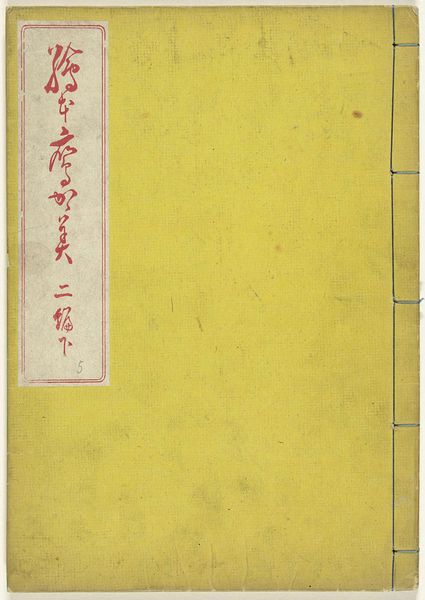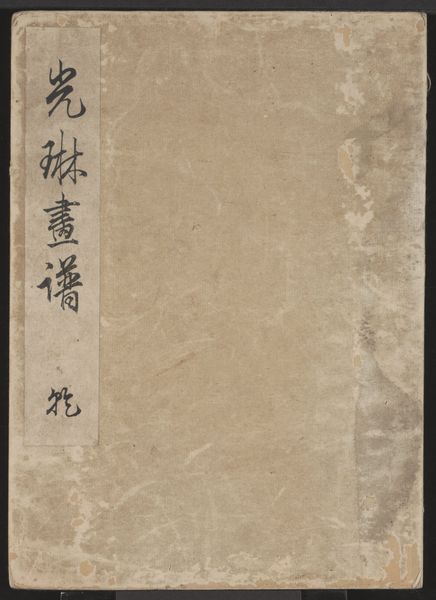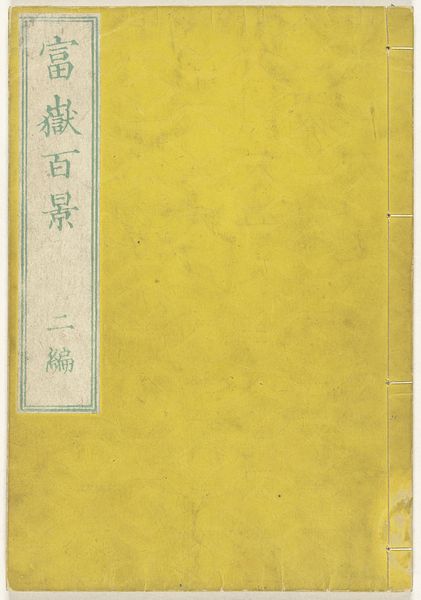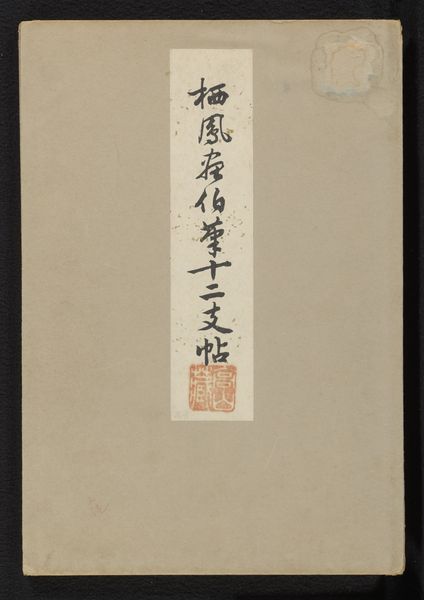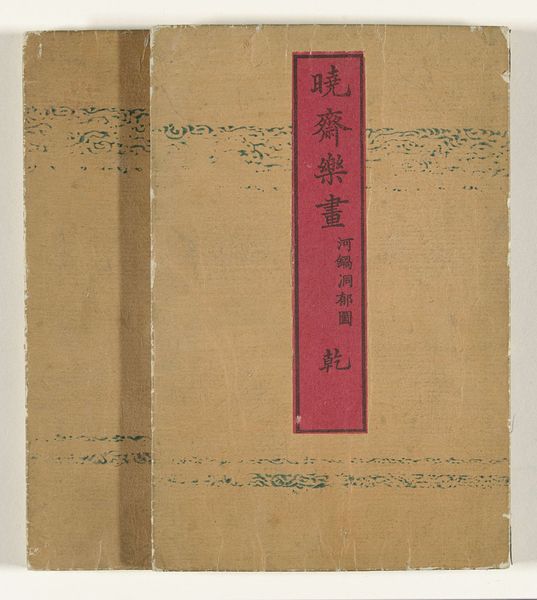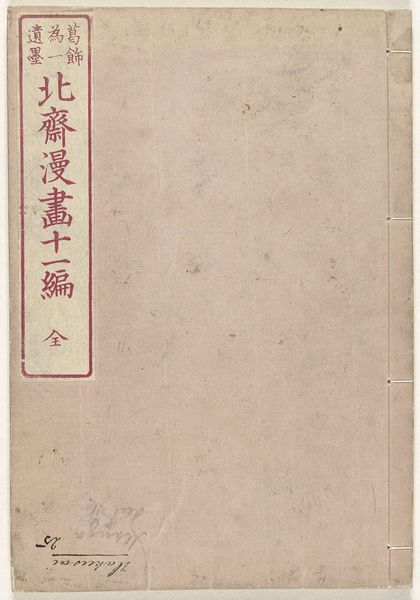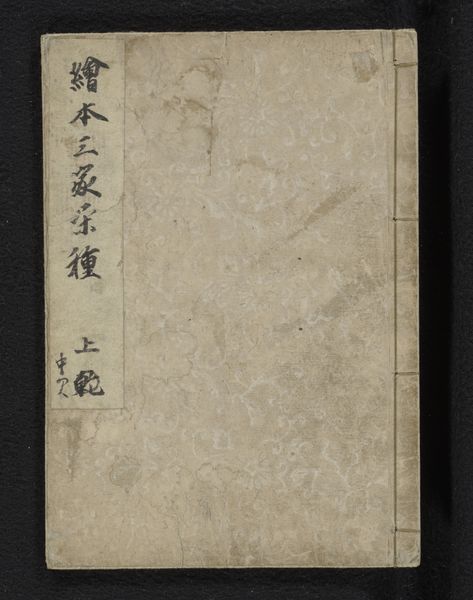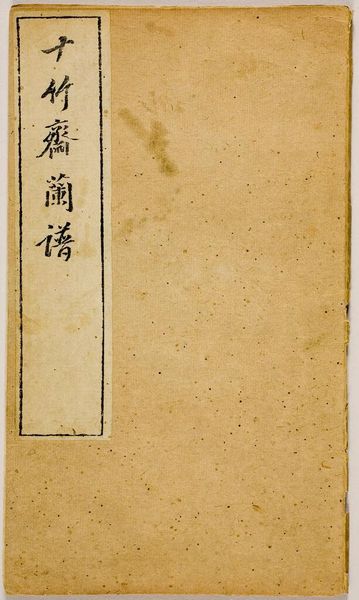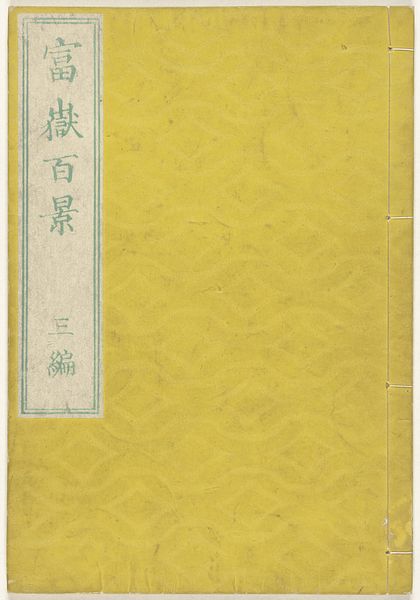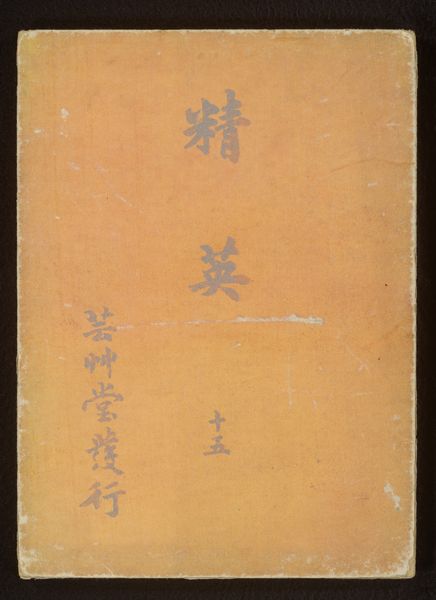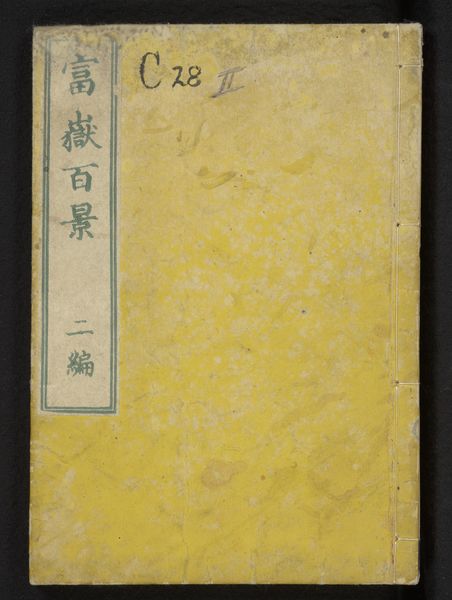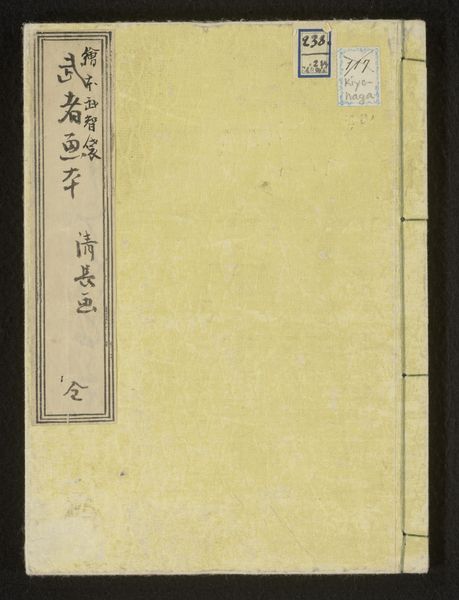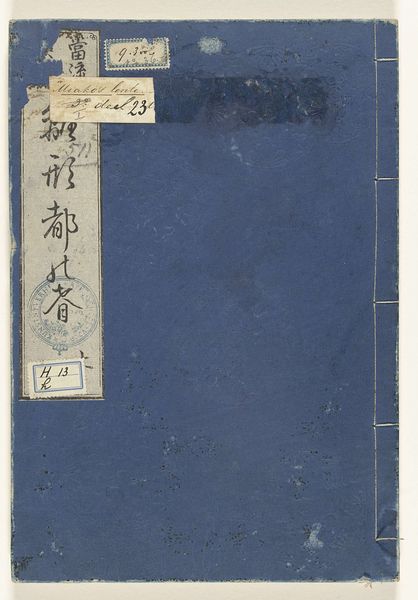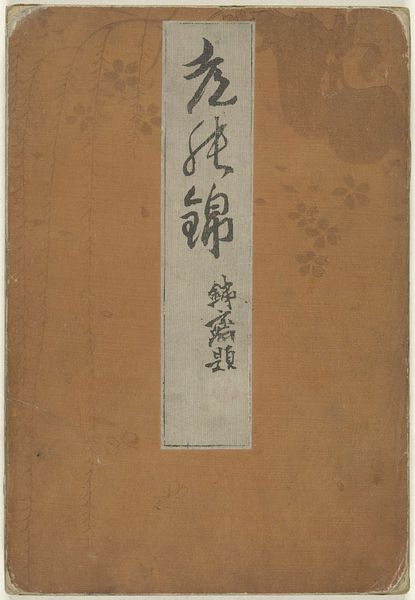
Dimensions: height 231 mm, width 161 mm
Copyright: Rijks Museum: Open Domain
Curator: At first glance, it reminds me of an old manuscript found in an attic—intriguing! Editor: Indeed! What you're observing is the cover of "Geïllustreerde spiegel der valken", an 1879 print crafted by Kawanabe Kyōsai. This piece resides here at the Rijksmuseum and showcases Kyōsai's distinctive style using drawing and print techniques on paper. Curator: It seems a rather utilitarian object. The aged paper, the simple binding, they point to function over ornamentation. Was it intended as a luxury item? Editor: Functionality is a key aspect here. Works of this kind existed in the vibrant culture of the Ukiyo-e art scene. They functioned as readily accessible, relatively affordable items, enabling widespread engagement with art and popular narratives. These books democratized access. Curator: That’s an interesting perspective. How does it play into museum culture, presenting this mass produced item? Editor: Museums serve as custodians, revealing societal narratives and tracing the evolution of imagery. Displaying Kyosai’s book foregrounds the intersection between commerce, art, and society. Curator: The choice of materials is interesting, particularly paper, especially considering the rapid changes in printing technology during this era. The very tactile quality of this type of homemade paper suggests a deliberate artistic preference and decision. What impact would you say this texture provides? Editor: Absolutely, the physical qualities shape perception. It suggests that even in print, Kyōsai considered the materiality as an essential element for the piece to retain its artistic impact for audiences who may interact with these forms outside gallery walls. Curator: Looking closer, I'm seeing a potential artist sketchbook character, something meant for quick use, rather than precious and overly designed production. Editor: Correct! As it might appear now within a collection, this book’s binding or aged textures weren't about refined gallery taste, or a precious, fragile object, but about practical function and disseminating artwork within everyday life. Curator: Food for thought. Considering it within those contexts really shifts my perception. Editor: Yes, and through the means of production—through print and paper, it highlights how images reach and engage their audience.
Comments
No comments
Be the first to comment and join the conversation on the ultimate creative platform.
